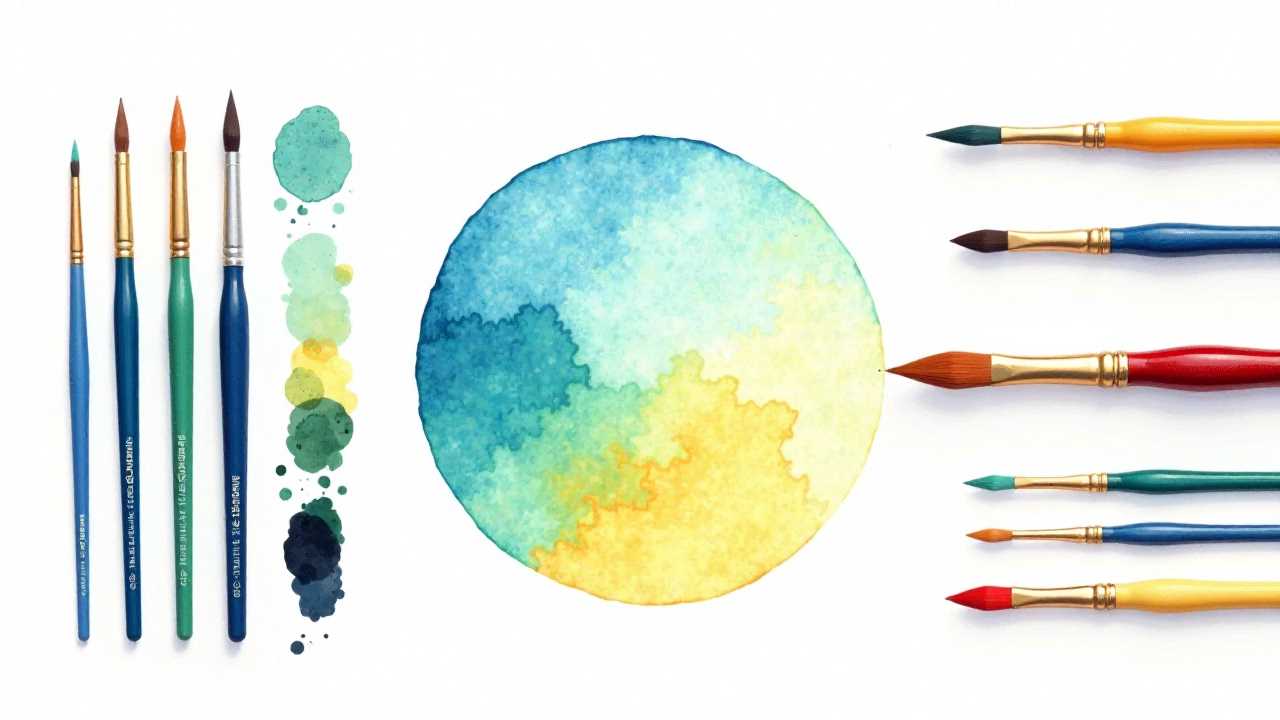
Understanding Digital Watercolor Techniques
Digital watercolor techniques have transformed the way artists approach painting in the digital realm. By combining traditional watercolor methods with modern technology, we can create stunning artworks that capture the essence of watercolor while offering the flexibility and convenience of digital tools. This guide will explore the essential components of digital watercolor techniques, including digital painting, brush customization, layer management, color theory, texture application, and composition skills.
The Art of Digital Painting
Digital painting serves as the foundation for mastering digital watercolor techniques. Unlike traditional painting, digital painting allows artists to work with a variety of tools and software that mimic the effects of real paint. Programs such as Adobe Photoshop, Corel Painter, and Procreate offer a range of brushes and effects that can replicate the fluidity and transparency of watercolor.
When engaging in digital painting, it is vital to understand how to manipulate the brush settings to achieve the desired effect. Artists can adjust parameters such as opacity, flow, and blending modes to create layers of color that mimic the way watercolors interact on paper. This flexibility allows for experimentation and innovation, enabling artists to push the boundaries of their creativity.
Brush Customization for Unique Effects
One of the standout features of digital watercolor techniques is the ability to customize brushes. Brush customization allows artists to create unique textures and effects that are difficult to achieve with traditional media. By modifying existing brushes or creating new ones from scratch, we can tailor our tools to suit our artistic vision.
To customize brushes effectively, we should consider factors such as shape dynamics, scattering, and texture. For instance, a brush that simulates the look of a wet brush can be adjusted to create more or less texture based on the desired outcome. This level of control empowers artists to develop a signature style that reflects their individuality.
Mastering Layer Management
Layer management is a critical aspect of digital watercolor techniques. Layers allow artists to separate different elements of their artwork, making it easier to edit and refine specific areas without affecting the entire piece. Understanding how to use layers effectively can significantly enhance the quality of our digital paintings.
When working with layers, we should utilize features such as layer masks and blending modes. Layer masks enable us to hide or reveal portions of a layer, allowing for seamless blending and transitions between colors. Blending modes, on the other hand, determine how layers interact with one another, creating various effects that can enhance the depth and richness of our artwork.
Applying Color Theory in Digital Watercolor
Color theory plays a vital role in digital watercolor techniques. A solid understanding of color relationships, harmonies, and contrasts can elevate our artwork to new heights. By applying color theory principles, we can create compositions that are visually appealing and emotionally resonant.
When selecting colors for our digital watercolor paintings, we should consider the color wheel and the relationships between primary, secondary, and tertiary colors. Complementary colors can create striking contrasts, while analogous colors can produce harmonious blends. Additionally, understanding the psychology of color can help us convey specific moods and feelings within our artwork.
Texture Application for Realistic Effects
Texture application is another essential element of digital watercolor techniques. The ability to add texture can significantly enhance the realism and depth of our paintings. By incorporating various textures, we can mimic the appearance of traditional watercolor paper, brush strokes, and even the effects of water on pigment.
To achieve realistic textures, we can utilize texture brushes, overlays, and blending techniques. Texture brushes can be customized to replicate the look of traditional materials, while overlays can add depth and complexity to our work. Experimenting with different textures allows us to create unique and captivating pieces that stand out in the digital art community.
Developing Composition Skills
Composition skills are fundamental to creating impactful digital watercolor artworks. A well-composed piece draws the viewer's eye and conveys the intended message effectively. Understanding the principles of composition, such as balance, focal points, and the rule of thirds, can help us create visually engaging artworks.
When planning our compositions, we should consider the arrangement of elements within the frame. Utilizing leading lines, contrast, and negative space can guide the viewer's gaze and create a sense of harmony within the artwork. Additionally, experimenting with different perspectives and viewpoints can add interest and depth to our compositions.
Bringing It All Together
Mastering digital watercolor techniques requires a combination of skills, knowledge, and creativity. By focusing on digital painting, brush customization, layer management, color theory, texture application, and composition skills, we can create stunning artworks that resonate with viewers. As we continue to explore and refine our techniques, we will unlock new possibilities in the world of digital watercolor art. Embrace the journey of learning and experimentation, and let your creativity flourish in the digital realm.
 Digital Art InstructionDIY Infographics DesignMobile Game ArtworkPersonalized Logo Design3D AnimationeBook Covers DesignPrivacy PolicyTerms And Conditions
Digital Art InstructionDIY Infographics DesignMobile Game ArtworkPersonalized Logo Design3D AnimationeBook Covers DesignPrivacy PolicyTerms And Conditions
